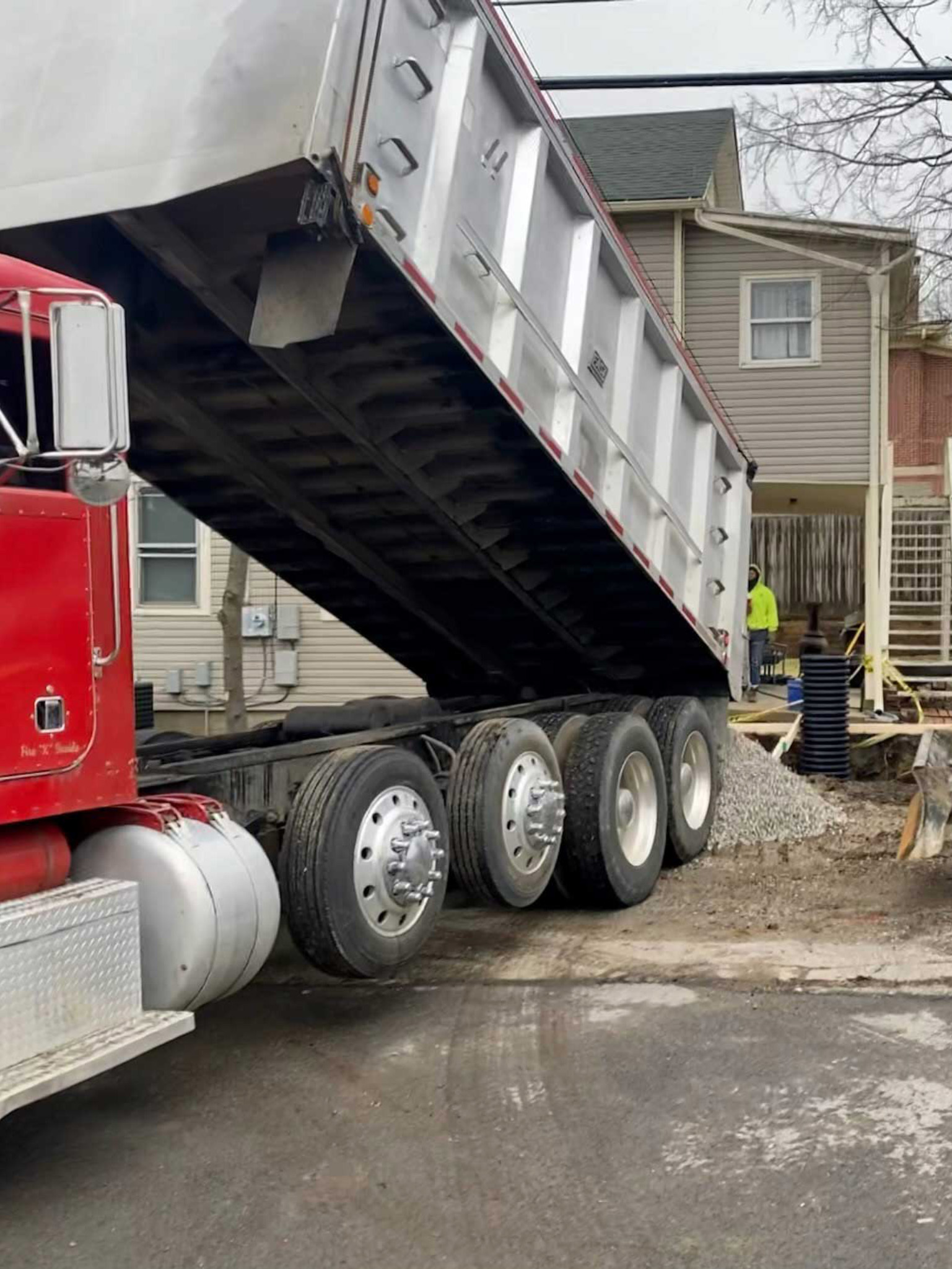Finest Dump Truck Companies in Ohio - Top-Rated Dump Truck Providers
Wiki Article
Comprehensive Excavation Strategies: Grasping the Principles for Success
In the world of building and civil design, the significance of reliable excavation strategies can not be overstated. The cautious preparation, accurate implementation, and thorough focus to information needed in excavation tasks require a thorough approach that includes numerous basic facets. From preliminary soil analysis to the application of precaution and regular progression surveillance, grasping these core components is important for achieving success in any type of excavation endeavor. However, the true proficiency lies not merely in understanding these basics but in effortlessly incorporating them to browse the intricacies of excavation projects with finesse.Comprehending Excavation Task Preparation

The initial stage of any kind of excavation job is the planning stage, where important decisions are made that can dramatically influence the outcome of the job. Understanding the task budget, extent, and timeline constraints is vital for creating an extensive excavation strategy that ensures the task's success.
One trick element of excavation task preparation is the growth of an in-depth timeline that describes the sequence of target dates, milestones, and tasks. This timeline acts as a roadmap for the task team, allowing them to track progress and make essential modifications to make sure the job remains on timetable. Furthermore, a distinct budget plan that accounts for all costs, including devices service, labor expenses, and materials, is essential for staying clear of expense overruns and delays. By meticulously considering all these variables throughout the drawing board, excavation tasks can be carried out effectively and effectively, causing effective outcomes.
Dirt Evaluation and Site Analysis
Conducting thorough dirt analysis and website evaluation is an essential action in the prep work stage of any kind of excavation task. Soil evaluation involves figuring out the make-up, structure, and residential or commercial properties of the soil at the excavation site. This information is critical for recognizing the dirt's bearing capacity, dampness material, and capacity for erosion, which are crucial consider determining the excavation approaches and devices required for the task.Website examination goes beyond soil evaluation and encompasses a more comprehensive evaluation of the total website problems. This analysis consists of determining any type of prospective threats, such as below ground utilities, ecological concerns, or unsteady terrain, that might impact the excavation procedure. By thoroughly assessing the site, project supervisors can create effective excavation strategies that prioritize safety and security, efficiency, and environmental management.
Making use of innovative technologies like ground-penetrating radar, dirt tasting, and drone surveys can boost the accuracy and effectiveness of dirt analysis and website assessment. Investing time and resources in these preliminary steps can ultimately save time and avoid costly hold-ups or difficulties throughout the excavation process.
Devices Choice and Utilization
Effective excavation jobs count heavily on critical equipment option and application to make certain optimum efficiency and efficiency. Selecting the ideal equipment for the work is important in taking full advantage of effectiveness and decreasing downtime. Factors such as the sort of dirt, depth of excavation, and job extent play a considerable role in establishing the most ideal tools for the task at hand.
In enhancement to choosing the ideal equipment, appropriate utilization is key to job success. Operators has to be trained to take care of the equipment securely and effectively - lancaster excavation. Regular upkeep checks and timely repair services aid avoid failures and guarantee regular performance throughout the task
Security Procedures and Regulations Compliance
In the realm of excavation tasks, prioritizing precaution and conformity with guidelines is critical to making sure a safe and legitimately sound operational atmosphere. Safety and security steps include a variety of techniques, consisting of conducting extensive website analyses, applying correct signage and barriers, and offering adequate safety and security training for all workers included in the excavation process. Adherence to guidelines, such as OSHA requirements in the United States, ensures that the excavation task fulfills the needed standards to safeguard workers, onlookers, and the surrounding environment.
Surveillance Development and Adjusting Approaches
Exactly how can forecast supervisors successfully track the development of excavation projects and adjust their techniques accordingly to optimize results? Surveillance progression is essential for making sure that excavation tasks remain on track and fulfill target dates. Project managers can utilize different devices and techniques to track progression, such as everyday progression reports, normal site inspections, and advanced tracking innovations like drones and GPS tracking systems. By constantly keeping an eye on the job's development, managers can determine any potential hold-ups or concerns beforehand and take proactive measures to address them.
Conclusion
Finally, mastering the principles of detailed excavation methods is important for the success of any kind of task. By comprehending job planning, analyzing dirt and website conditions, picking ideal equipment, adhering to safety and security policies, and keeping an eye on progression, project managers can make sure a efficient and smooth excavation process. Applying these strategies will result in successful outcomes and decrease possible threats or setbacks throughout the excavation project.
The initial phase of any type of excavation project is the planning phase, where important decisions are made that can substantially impact the result of the task. Comprehending the task scope, timeline, and spending plan restraints is essential for creating a thorough excavation plan that makes certain the project's success.
Just how can forecast managers effectively track the innovation of excavation tasks and adapt their strategies appropriately to maximize outcomes? By closely monitoring progress and being prepared to adjust strategies, job supervisors can improve the overall success of excavation jobs.
By recognizing job preparation, analyzing soil and website conditions, selecting appropriate tools, abiding with lancaster excavation safety and security policies, and checking development, task supervisors can ensure a reliable and smooth excavation process.
Report this wiki page